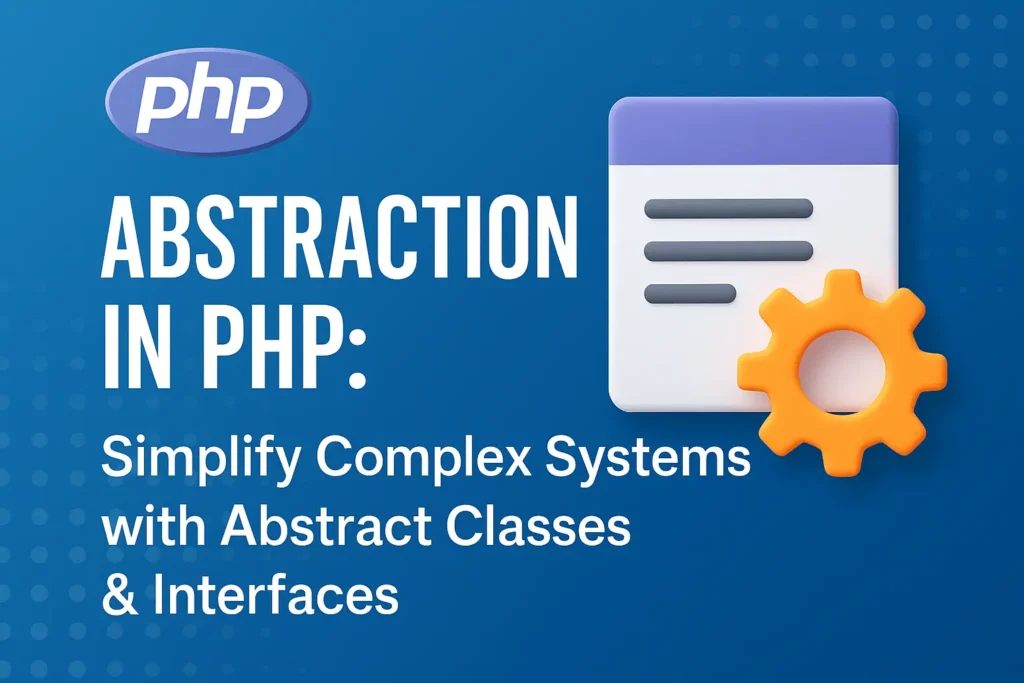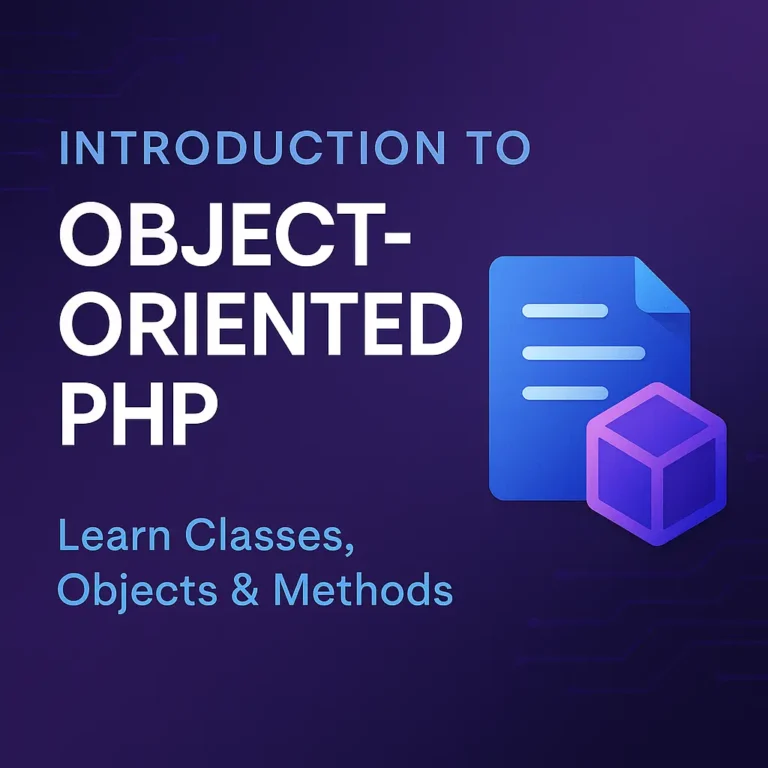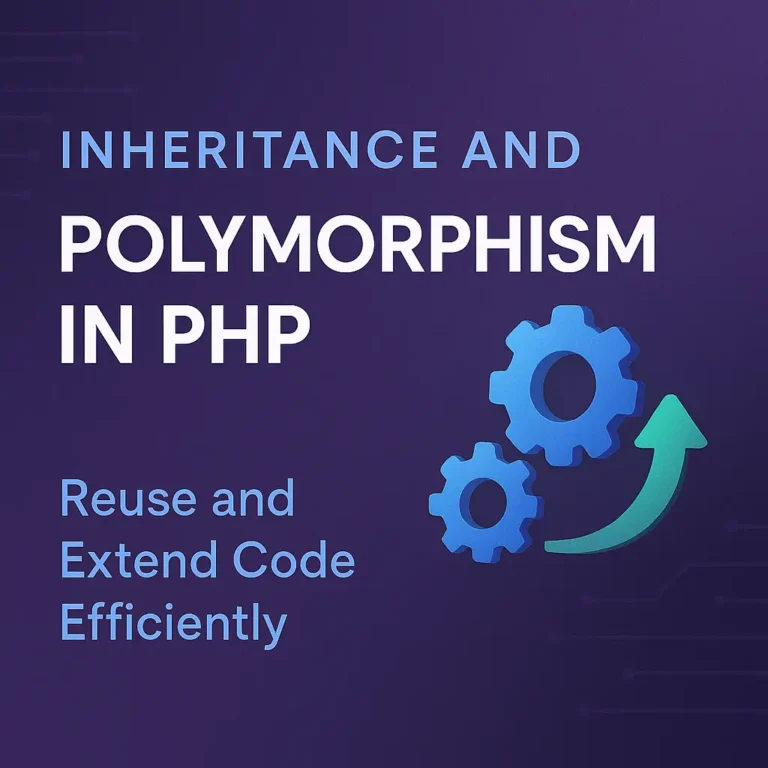In PHP, abstraction is primarily achieved using abstract classes and methods. This article explores the principles of abstraction, the use of abstract classes and methods, and provides practical examples to illustrate these concepts.
Abstraction Principles
Abstraction in OOP involves creating simplified models of complex real-world entities. It focuses on the essential characteristics while ignoring the irrelevant details. The main principles of abstraction are:
Simplification: Abstraction simplifies complex systems by breaking them into smaller, more manageable components.
Focus on What: It emphasizes what an object does rather than how it does it.
Encapsulation: By encapsulating the details, abstraction promotes a clear separation of concerns.
Benefits of Abstraction
Reduced Complexity: By focusing on essential details, abstraction reduces the complexity of the codebase.
Enhanced Maintainability: Simplified models are easier to maintain and extend.
Improved Reusability: Abstracted components can be reused across different parts of an application.
Abstract Classes and Methods
In PHP, abstract classes and methods provide a way to enforce abstraction. An abstract class is a class that cannot be instantiated on its own and is meant to be subclassed. Abstract methods are methods declared in an abstract class that must be defined in its subclasses.
Abstract Classes
An abstract class is declared using the abstract keyword. It can contain both abstract and concrete methods. Abstract classes cannot be instantiated directly; they serve as a blueprint for other classes.
Example: Abstract Class in PHP
abstract class Vehicle {
protected $make;
protected $model;
public function __construct($make, $model) {
$this->make = $make;
$this->model = $model;
}
// Abstract method
abstract public function start();
// Concrete method
public function getDetails() {
return "Make: $this->make, Model: $this->model";
}
}
class Car extends Vehicle {
public function start() {
echo "Starting the car: $this->make $this->model\n";
}
}
class Motorcycle extends Vehicle {
public function start() {
echo "Starting the motorcycle: $this->make $this->model\n";
}
}
// Client code
$car = new Car("Toyota", "Corolla");
echo $car->getDetails() . "\n";
$car->start();
$motorcycle = new Motorcycle("Honda", "CBR600RR");
echo $motorcycle->getDetails() . "\n";
$motorcycle->start();
In this example, Vehicle is an abstract class with an abstract method start and a concrete method getDetails. The Car and Motorcycle classes extend Vehicle and provide implementations for the start method.
Abstract Methods
Abstract methods are declared in abstract classes without an implementation. Subclasses must provide an implementation for these methods. Abstract methods ensure that certain methods are implemented in every subclass, promoting a consistent interface.
Example: Abstract Methods in PHP
abstract class Shape {
protected $color;
public function __construct($color) {
$this->color = $color;
}
// Abstract method
abstract public function draw();
// Concrete method
public function getColor() {
return $this->color;
}
}
class Circle extends Shape {
private $radius;
public function __construct($color, $radius) {
parent::__construct($color);
$this->radius = $radius;
}
public function draw() {
echo "Drawing a $this->color circle with radius $this->radius\n";
}
}
class Rectangle extends Shape {
private $width;
private $height;
public function __construct($color, $width, $height) {
parent::__construct($color);
$this->width = $width;
$this->height = $height;
}
public function draw() {
echo "Drawing a $this->color rectangle with width $this->width and height $this->height\n";
}
}
// Client code
$circle = new Circle("red", 10);
$circle->draw();
$rectangle = new Rectangle("blue", 20, 30);
$rectangle->draw();
In this example, Shape is an abstract class with an abstract method draw. The Circle and Rectangle classes extend Shape and provide implementations for the draw method.
Practical Applications of Abstraction
Abstraction is widely used in software design to manage complexity and enhance code maintainability. Here are some practical scenarios where abstraction is beneficial:
Scenario 1: Payment Processing System
Consider a payment processing system where different types of payment methods are supported (e.g., credit card, PayPal, bank transfer). An abstract class can define the common interface for all payment methods.
abstract class PaymentMethod {
protected $amount;
public function __construct($amount) {
$this->amount = $amount;
}
// Abstract method
abstract public function processPayment();
}
class CreditCardPayment extends PaymentMethod {
public function processPayment() {
echo "Processing credit card payment of $this->amount\n";
}
}
class PayPalPayment extends PaymentMethod {
public function processPayment() {
echo "Processing PayPal payment of $this->amount\n";
}
}
// Client code
$payment1 = new CreditCardPayment(100);
$payment1->processPayment();
$payment2 = new PayPalPayment(200);
$payment2->processPayment();
In this scenario, the PaymentMethod abstract class defines the processPayment method that must be implemented by all subclasses. This ensures a consistent interface for processing payments, regardless of the payment method.
Scenario 2: Employee Management System
In an employee management system, different types of employees (e.g., full-time, part-time, contractor) can share common attributes and behaviors but have specific implementations for certain methods.
abstract class Employee {
protected $name;
protected $salary;
public function __construct($name, $salary) {
$this->name = $name;
$this->salary = $salary;
}
// Abstract method
abstract public function calculateBonus();
// Concrete method
public function getDetails() {
return "Name: $this->name, Salary: $this->salary";
}
}
class FullTimeEmployee extends Employee {
public function calculateBonus() {
return $this->salary * 0.1;
}
}
class PartTimeEmployee extends Employee {
public function calculateBonus() {
return $this->salary * 0.05;
}
}
// Client code
$fullTimeEmployee = new FullTimeEmployee("John Doe", 50000);
echo $fullTimeEmployee->getDetails() . "\n";
echo "Bonus: " . $fullTimeEmployee->calculateBonus() . "\n";
$partTimeEmployee = new PartTimeEmployee("Jane Smith", 20000);
echo $partTimeEmployee->getDetails() . "\n";
echo "Bonus: " . $partTimeEmployee->calculateBonus() . "\n";
In this scenario, the Employee abstract class defines a method calculateBonus that must be implemented by all subclasses, ensuring that each type of employee calculates their bonus according to their specific rules.
Conclusion
Abstraction is a powerful concept in PHP and OOP that helps manage complexity by focusing on essential features while hiding unnecessary details. Abstract classes and methods are key tools for implementing abstraction, providing a blueprint for other classes and enforcing a consistent interface across different subclasses.
By using abstraction, developers can create flexible, maintainable, and scalable code that is easier to understand and extend. Whether it’s managing different types of payment methods, employees, or any other complex system, abstraction allows for a clear separation of concerns and promotes better code organization. Understanding and applying the principles of abstraction will significantly enhance your ability to design robust software systems in PHP.






